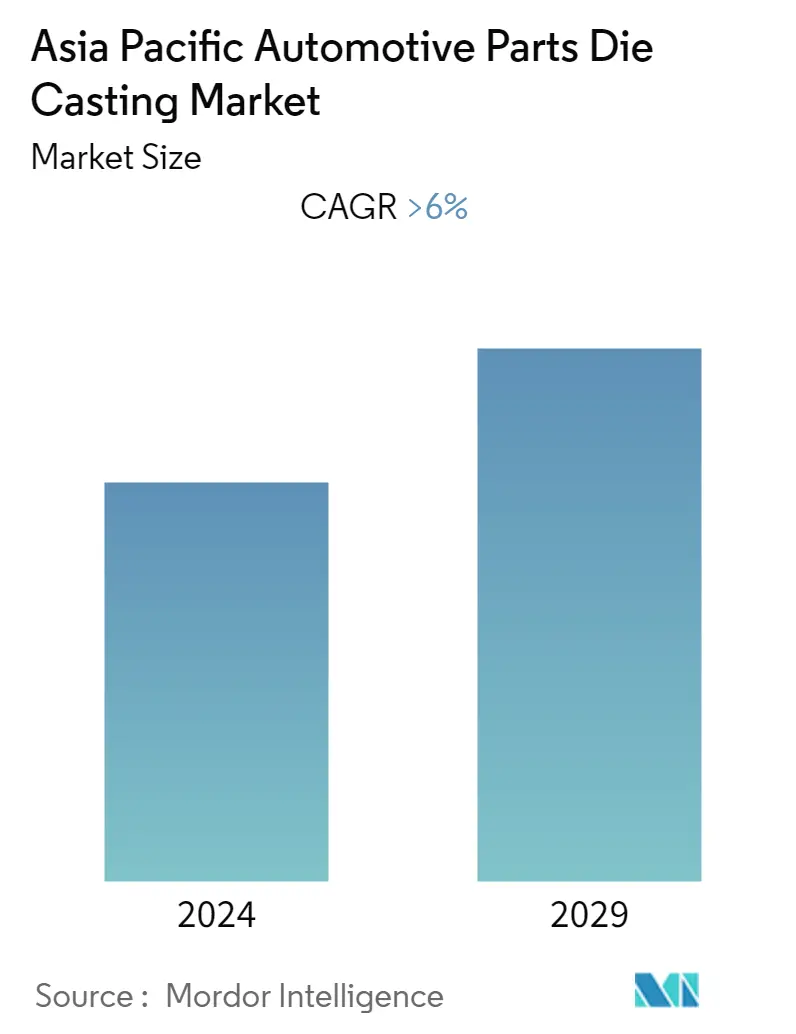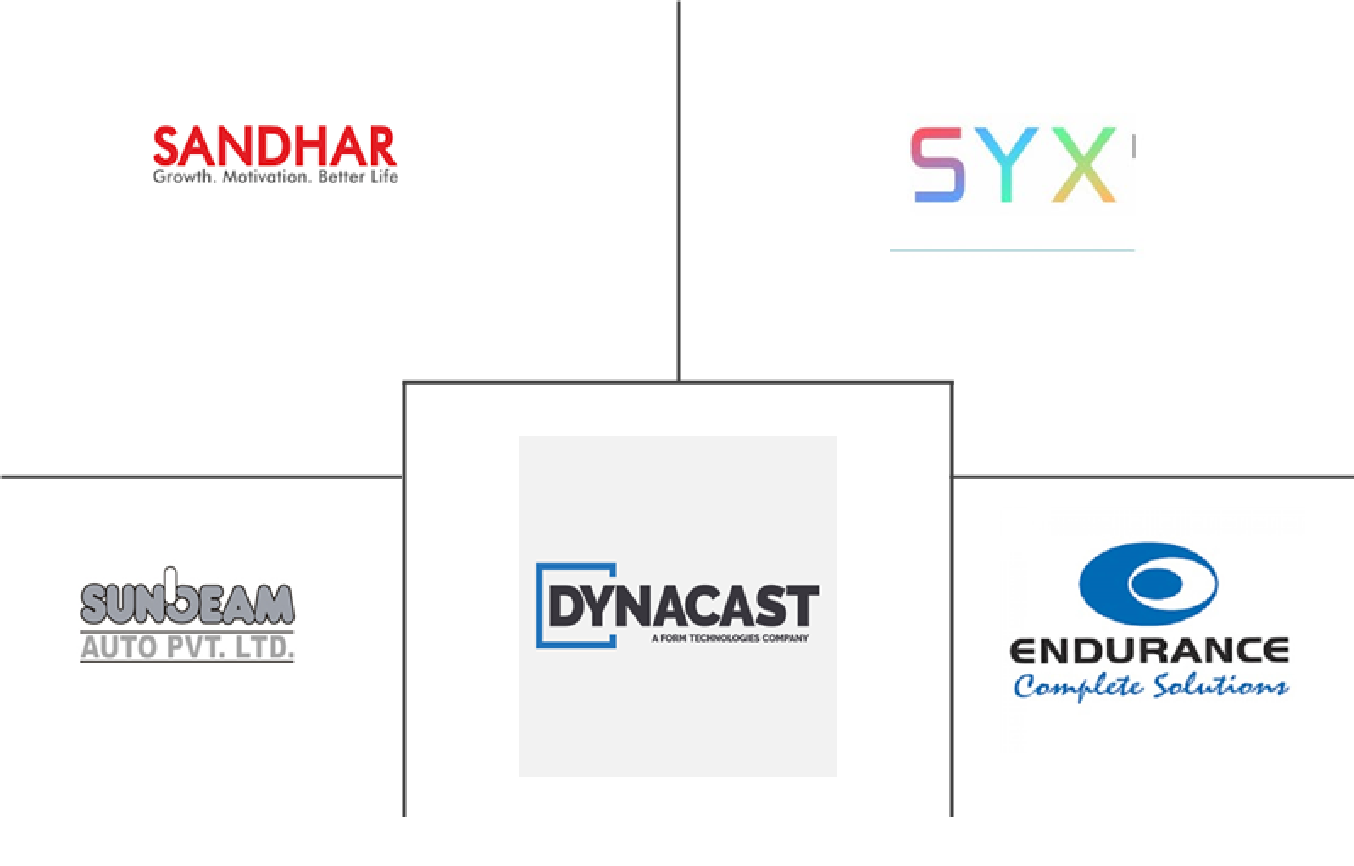Market Size of Asia Pacific Automotive Parts Die Casting Industry

| Study Period | 2019 - 2029 |
| Base Year For Estimation | 2023 |
| Forecast Data Period | 2024 - 2029 |
| Historical Data Period | 2019 - 2022 |
| CAGR | > 6.00 % |
| Market Concentration | Medium |
Major Players
*Disclaimer: Major Players sorted in no particular order |
Need a report that reflects how COVID-19 has impacted this market and its growth?
APAC Automotive Parts Die Casting Market Analysis
The Asia-Pacific automotive parts die casting market is expected to register a CAGR of over 6% during the forecasted period (2020 - 2025)
- The Asia-Pacific automotive industry is one of the largest with China, South Korea, Japan, and India leading the production industry. Die casting is an effective and economical process which could be moulded into various forms. High-speed production, high dimension accuracy and stability, strength, and simple assembly is the reason for wide use of die casting materials in automotive industry. Most of the applications in automotive industry are fulfilled by this die casting process.
- To meet the emissions regulations and policies OEMs are trying to reduce weight of automobiles by employing lightweight non-ferrous metals. Die casting process has been adapted as the main strategy. Die casting process has many advantages compared to traditional methods. High speed production, accuracy, stability, strength to weight ratio, better finish, and simple assembly.
- The high cost associated with metal dies means large capitals are required and this process is profitable only to high-volume production. This process is limited to metals with high-fluidity, and casting weight must be between 30 grams and 10 kilograms. This process might result in porosity. This prevented usage of any heat treatment or welding process on the surface. Also, this process is only for parts in which softness is required, parts with hardening and tempering cannot be made with this process. OEMs are working on improving the technology and this market is expected to grow during the forecasted period.
